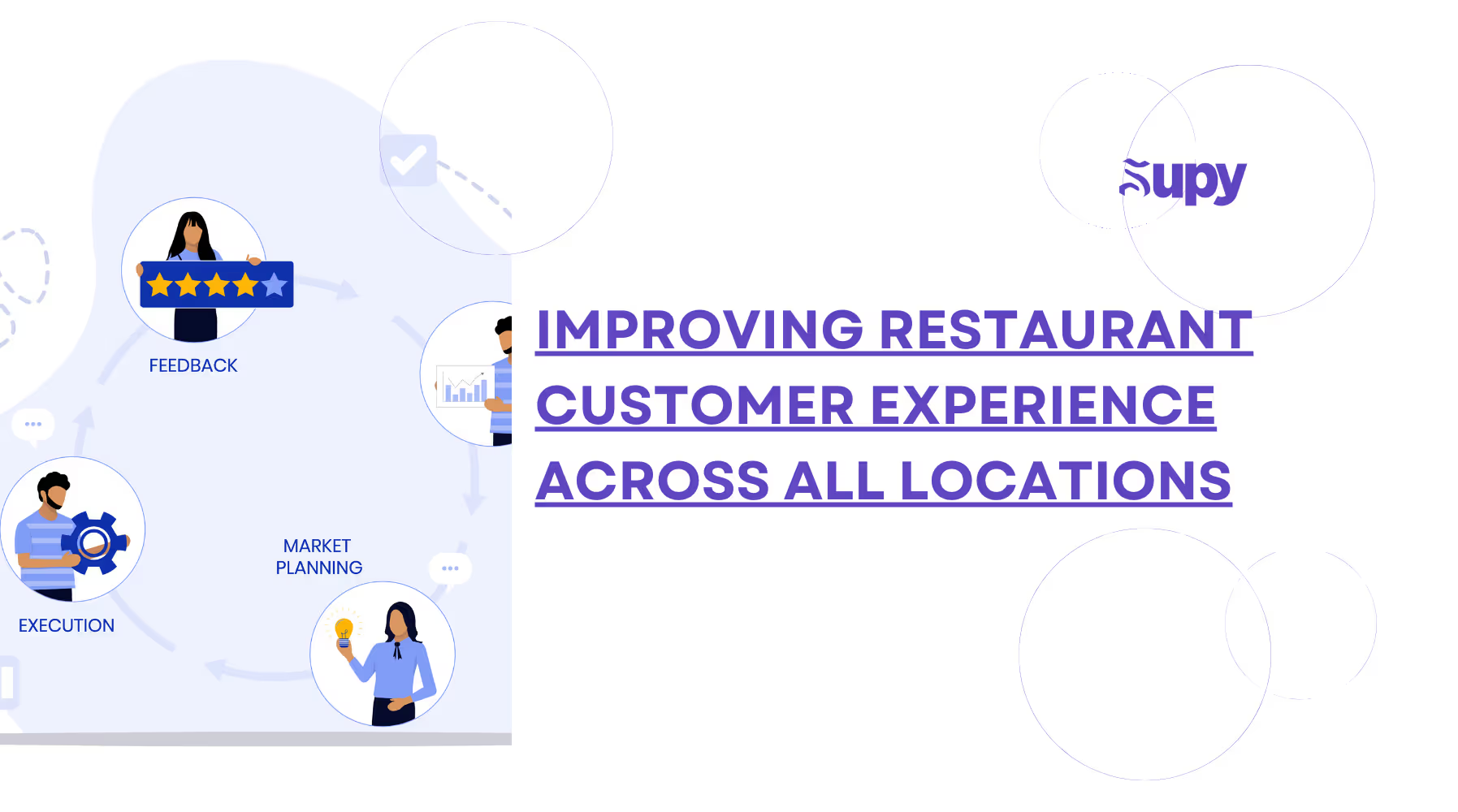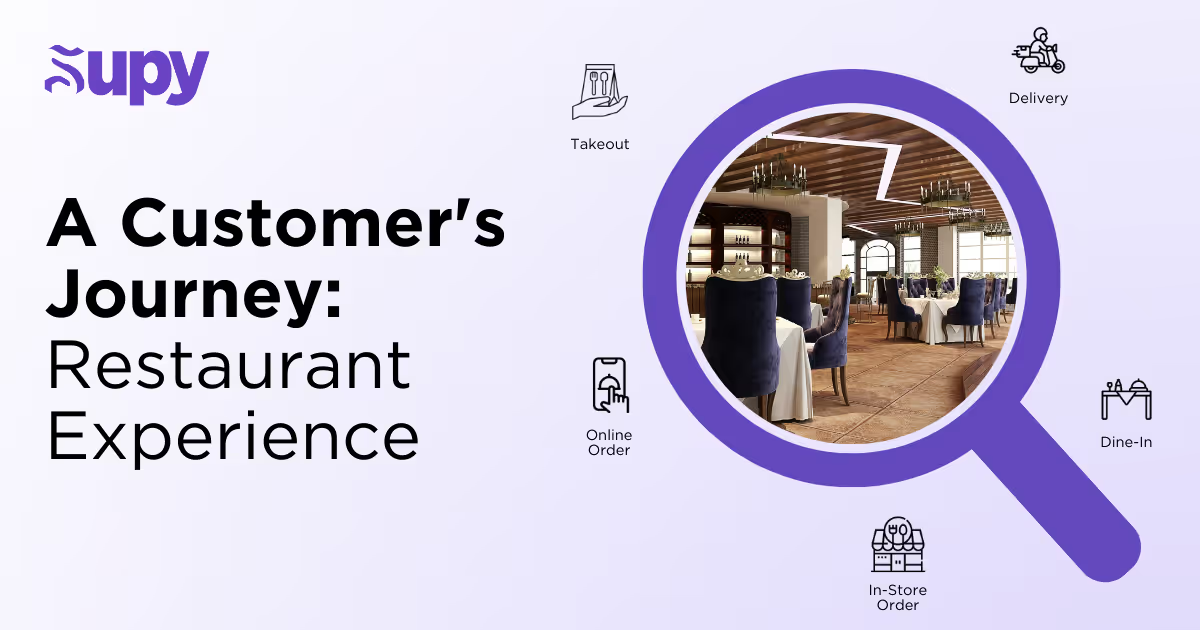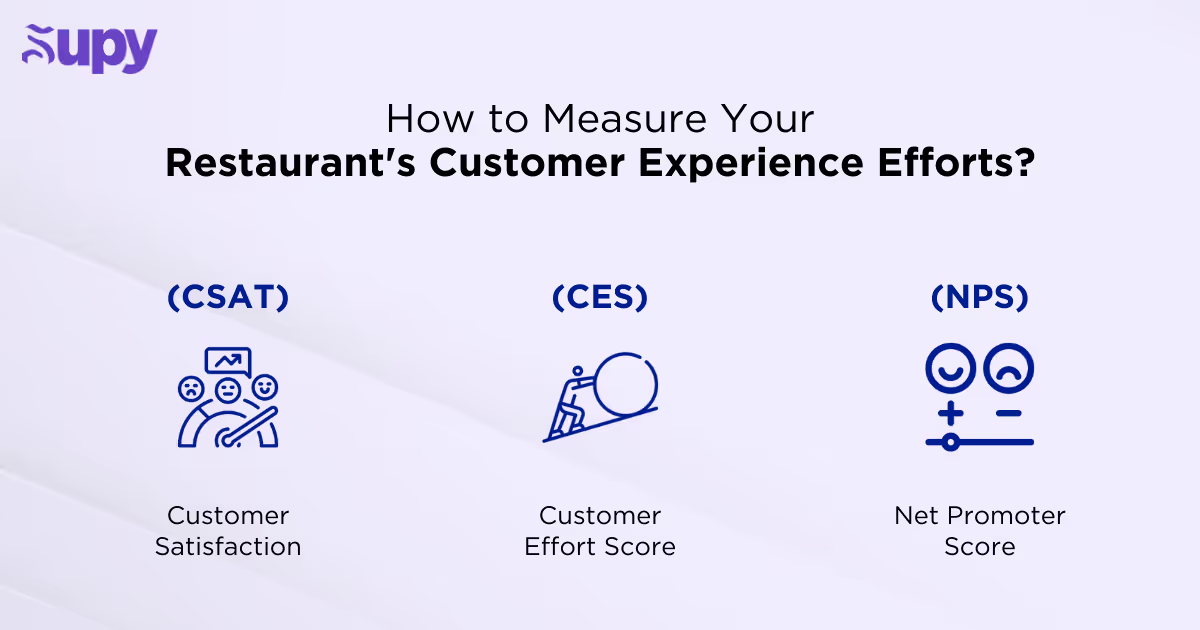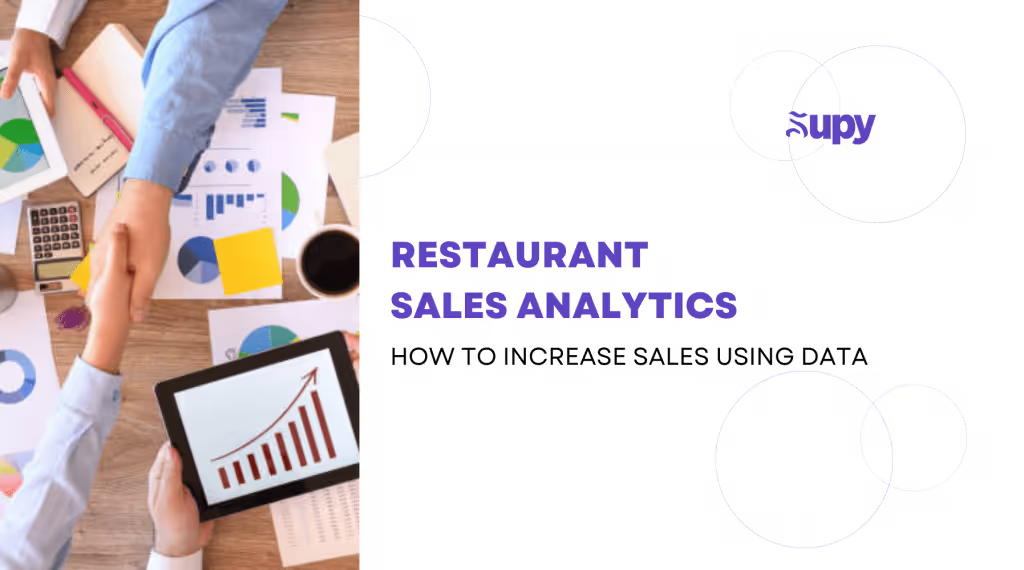Improving Restaurant Customer Experience Across All Locations

Customer Experience (CX) is one of the most important success factors for any business. In the restaurant and F&B industry, it plays an even bigger role. Today’s customers, especially millennials, value experiences over material goods—78% say they would rather spend money on an activity like dining out than buying something from a store.
Dining in is just one part of the equation. The customer experience spans every step of the journey—from placing a takeaway order to receiving a delivery or interacting with staff. Every moment counts in shaping how customers perceive your brand.
For restaurants with multiple locations, delivering a consistent and memorable customer experience can be tricky. Ensuring quality food, timely service, and smooth operations across all locations requires careful planning and attention to detail. In today’s competitive market, these small yet crucial factors can set your restaurant apart.
In this blog, we’ll explore:
- The Issues of Inconsistent Customer Experiences
- Identifying Key Touchpoints in the Customer Journey
- Proven Strategies to Enhance Customer Experience Across Multiple Locations
- How to Measure Your Restaurant's Customer Experience Efforts?
- Conclusion
- About Supy
By the end, you’ll know how to turn every visit into a memorable experience—no matter which location your customers walk into.
1. The Issues of Inconsistent Customer Experiences
Inconsistent customer experiences can severely damage a restaurant brand's reputation and customer loyalty, especially for multi-location chains. Variations in portion sizes, wait times, or service quality frustrate customers who expect the same standards no matter which location they visit.
Poor customer experience management at even a single outlet can lead to widespread dissatisfaction, highlighting the need for brands to prioritize consistency. Here are two examples of major brands and their challenges and consequences of failing to deliver uniform experiences.
Case Study 1: Chipotle Mexican Grill
Chipotle has come under fire for inconsistent portion sizes across its 3,500 locations. Customers have frequently voiced concerns on social media about receiving smaller portions than expected, creating unhappy customers and raising complaints about value for money. This inconsistency has the potential to impact customer loyalty and increase customer churn, especially in a market where diners have plenty of other options.
Acknowledging the issue, CEO Brian Niccol emphasized Chipotle’s commitment to ensuring generous portions and consistent service. To address this, the company has announced plans to improve employee training, standardize processes, and enhance customer experience management to deliver a more uniform experience.
Case Study 2: Starbucks
Starbucks has faced its own challenges with inconsistencies tied to its mobile-ordering system. Employees at various locations report difficulty managing the high volume of online orders while maintaining in-store service quality. This imbalance has resulted in extended wait times—sometimes up to 25 minutes—and order inaccuracies, leading to unhappy customers. These operational inconsistencies can directly affect business performance by eroding customer trust and loyalty. The company is now exploring strategies to streamline operations and balance the online and in-store experience, aiming to deliver a more cohesive and satisfying customer journey.
These examples highlight the operational complexities of maintaining consistency across multiple locations. For restaurant and F&B chains, identifying and addressing such challenges is critical to preserving customer trust, improving customer retention, and ensuring long-term business performance.
2. Identifying Key Touchpoints in the Customer Journey

A customer journey has several key touchpoints that drive the overall experience and perception of your brand. In the restaurant and F&B industry, these touchpoints span the entire customer journey—from the initial discovery of your business to the moment they complete their meal, whether dining in, ordering takeout, or opting for delivery.
Each step offers an opportunity to build trust, loyalty, and satisfaction—or risks creating frustration if not handled properly. To consistently meet and exceed customer expectations, it’s crucial to identify and optimize these critical moments to maintain a positive experience at every stage of the customer's journey.
Discovery and Engagement
The journey often begins before customers even step foot in your restaurant. Whether they find you through an online search, a delivery app, or a recommendation, this stage plays a crucial role in customer acquisition. A great first impression here is essential for attracting new customers and encouraging them to explore what your restaurant offers.
Key Focus Areas:
- Digital Presence: Your website should be mobile-friendly, visually appealing, and feature clear menu options, prices, and ordering links. Listings on multiple channels, such as Google My Business and delivery platforms, must be accurate and consistent.
- Social Media Strategy: High-quality photos, videos, and engaging posts can showcase your offerings and promotions. Using geo-targeted ads helps attract new customers in your local area.
- Online Reviews: Managing online reviews is a must. Responding to both positive and negative feedback demonstrates your commitment to improving the customer experience and builds trust.
Placing the Order (In-Store, Online, or via App)
When customers are ready to engage, the ordering process becomes a pivotal moment. Whether it’s through an app, website, or self-service kiosk, a smooth and intuitive process enhances customer engagement and sets the tone for what they can expect next.
Key Focus Areas:
- Seamless Online Ordering: A user-friendly platform with clear menus with dietary restrictions, customization options, and transparent pricing ensures customers can easily place their orders.
- Integrated Payment Options: Flexibility is key. Accepting digital wallets, cards, and cash-on-delivery gives customers the convenience they expect.
- Order Accuracy Across Locations: A centralized inventory system prevents discrepancies, ensuring items displayed on the menu are available. This consistency builds trust across multiple channels.
- Accessibility: Ensure your platform accommodates all users, including those with disabilities, to deliver a truly inclusive and great customer experience.
The Fulfillment Experience (Dine-In, Takeout, or Delivery)
This stage is where promises are fulfilled, and the opportunity to provide a personalized experience becomes clear. Inconsistencies or delays can easily lead to dissatisfaction, especially when customers interact with multiple channels for takeout and delivery.
Key Focus Areas:
- Dine-In: Standardize staff training and operational procedures to ensure consistency in service, food presentation, and cleanliness. These details ensure a positive customer experience no matter the location.
- Takeout and Delivery: Invest in durable, branded packaging that maintains food quality during transit. Eco-friendly packaging also appeals to customers who prioritize sustainability.
- Efficient Delivery Operations: Use GPS tracking to provide real-time updates and ensure timely deliveries. Transparent communication builds trust and ensures your delivery services meet the same standards as your dine-in experience.
Post-Order Engagement
The customer's journey doesn’t end once the meal is over. Post-order engagement strengthens relationships and encourages repeat visits, making it a top priority for customer retention.
Key Focus Areas:
- Feedback Collection: Automated emails, SMS, or app notifications requesting feedback allow customers to share their thoughts while the experience is fresh. This data helps refine your services.
- Loyalty Programs: Reward repeat diners with exclusive offers like discounts, free items, or priority reservations. Loyalty programs tied to apps make tracking and redemption easy, enhancing customer engagement.
- Social Media Engagement: Encourage customers to share their experiences online. Reposting user-generated content not only builds community but also attracts new customers through organic promotion.
- Customer Retention Campaigns: Analyze customer data to deliver targeted offers, such as discounts on frequently ordered dishes or personalized birthday deals. These strategies create a personalized experience and foster long-term loyalty.
3. Proven Strategies to Enhance Customer Experience Across Multiple Locations
Delivering exceptional customer experiences across multiple restaurant locations requires intentional effort and strategic planning. Each touchpoint in the customer journeys offers an opportunity to build trust, and consistency is key to ensuring that every location reflects the same level of quality and service. A strong customer experience strategy combines technology, employee engagement, and operational excellence to create satisfied customers who keep coming back.
1. Standardize Processes and Procedures
Consistency starts with clear and enforceable Standard Operating Procedures (SOPs). These should cover every aspect of operations, from food preparation and portion sizes to cleaning protocols and customer interaction standards. Use an restaurant operations management software for seamless integration of these guidelines across all locations. This ensures that every team member can refer to the same guiding principles, reducing inconsistencies and enhancing the overall customer experience.
Regular audits and quality checks ensure adherence to SOPs. Programs like mystery shopper evaluations provide insights into a customer's perspective, offering valuable data on how well individual locations uphold the brand's standards. Proactively addressing gaps helps build customer trust and loyalty while maintaining uniformity.
2. Leverage Technology for Operational Efficiency

Seventy-three percent of diners agree that restaurant technology improves their experience, making it a key focus for creating a customer experience strategy that works across multiple locations. Technology enhances efficiency and consistency in both the front and back of the house, catering to tech-savvy customers who expect streamlined interactions.
Front of the House Technology Enhancements:
- Self-Ordering Kiosks: With 54% of millennials stating that kiosks improve their guest experience, these systems are a game-changer. Self-ordering kiosks reduce wait times and empower customers to customize their orders without pressure, leading to higher satisfaction.
- QR Code Menus: Contactless QR code menus are convenient and hygienic. They also allow restaurants to make real-time updates, such as adding specials or removing unavailable items.
- NFC Payments and Advanced POS Systems: Near Field Communication (NFC) payment options and advanced POS systems enable faster and more secure transactions. These systems also integrate with loyalty programs, ensuring customers can easily redeem rewards and earn points.
Back of the House Technology Enhancements:
- Kitchen Display Systems (KDS): These systems streamline communication between the kitchen and the front of the house, reducing errors in order fulfillment and ensuring timely service.
- Inventory Management Software: Advanced software monitors stock levels in real-time and predicts shortages, allowing managers to reorder ingredients before they run out.
- Automated Scheduling Tools: These tools help create balanced staff schedules based on customer traffic trends, ensuring sufficient coverage during busy periods without overstaffing during quieter times.
3. Invest in Employee Training and Engagement
Employees play a central role in shaping the overall customer experience, making their training and engagement critical. Develop onboarding programs to teach new hires brand values, SOPs, and customer service expectations. Using an employee task management app can streamline training assignments and track progress, ensuring consistency. Ongoing training, delivered through digital platforms or workshops, keeps employees updated on new menu items, promotions, and service techniques.
Employee engagement is equally vital. Recognition programs that reward exceptional service motivate staff to maintain high standards. An employee task management app can also help assign responsibilities and provide clarity, empowering employees to focus on delivering exceptional service. When employees feel valued and supported, they are more likely to provide consistent and positive interactions, resulting in satisfied customers who leave with memorable experiences.
4. Personalize the Customer Experience
Standardization ensures reliability, but personalization adds a unique touch that builds loyalty. Using customer data from loyalty programs or purchase histories, restaurants can tailor interactions, such as suggesting a favorite dish or offering a birthday discount. This approach enhances the customer's perspective of being valued and understood.
Localization also plays a role in personalization. Adding region-specific menu items or promotions allows restaurants to connect with local communities while maintaining brand identity. This balance between consistency and customization ensures a meaningful connection with every customer.
5. Actively Seek and Implement Feedback
Collecting customer feedback is essential to understanding what works and where improvements are needed. Digital surveys, QR codes on receipts, and email follow-ups are effective ways to gather insights. Analyzing this data reveals trends and recurring issues, enabling restaurants to refine their offerings.
Taking action on customer feedback is just as important. Addressing common concerns and communicating these changes back to customers shows that their opinions are valued. This builds trust and loyalty, while also strengthening the customer experience strategy by aligning it with customer needs.
4. How to Measure Your Restaurant's Customer Experience Efforts?

To truly deliver an excellent customer experience, you need actionable data that highlights what's working and what needs improvement. With specific metrics, you can measure customer experience effectively and align your business processes with customer expectations.
Below are key metrics and insights on how to use them:
- Customer Satisfaction (CSAT): Ask customers to rate their satisfaction with specific aspects of their visit, such as food quality, service, or ambiance. Use surveys at the end of the dining experience or through follow-up emails. To make the data actionable, analyze trends across locations to identify recurring issues and address them promptly. A consistently high CSAT score ensures you're keeping your brand promise and delivering what customers expect.
- Customer Effort Score (CES): This metric evaluates how easy it is for customers to complete actions, such as placing an order or resolving a complaint. For example, ask questions like, "How easy was it to order through our app?" Lower scores may indicate friction in business processes like your online ordering platform or wait times. Use the insights to streamline processes, ensuring happy customers who are more likely to return.
- Net Promoter Score (NPS): This metric measures how likely customers are to recommend your restaurant to others, reflecting loyalty and advocacy. Calculate your NPS by subtracting the percentage of detractors from promoters. To maximize its value, segment the data by location or customer type (e.g., dine-in vs. takeout) to understand customer perceptions in different contexts. Address areas with low scores to foster loyalty and increase revenue.
- Revenue Per Customer (RPC): Tracking the average revenue per customer visit provides valuable insights into how effectively your business processes encourage spending. Low RPC might indicate gaps in upselling techniques or customer dissatisfaction. Use this data to train staff on offering add-ons and suggest pairings to boost satisfaction and revenue.
- Feedback Analysis: Combine qualitative data from open-ended survey questions or online reviews with your quantitative metrics. This will help you understand customer pain points and preferences in greater depth. For instance, are customers frequently mentioning slow delivery times or praising your menu variety? This analysis ensures that your efforts are targeted to improve areas that matter most.

5. Conclusion
Delivering customer satisfaction in the restaurant industry depends on understanding customer needs and creating a positive customer experience at every touchpoint. Leveraging market research, technology, and standardized processes helps ensure consistency and reliability across locations. Restaurants that focus on meeting customer expectations build stronger loyalty, foster repeat business, and establish a lasting competitive edge.
6. About Supy
Supy provides exceptional inventory management, menu engineering, and back-of-the-house solutions to help restaurants and F&B chains streamline their operations and deliver a positive customer experience across all locations.
With real-time inventory tracking, seamless integration with multiple platforms, and tools to enhance operational efficiency, Supy empowers businesses to consistently meet customer expectations and maintain high standards.
Take the first step toward transforming your restaurant operations—book a demo with Supy today and see the difference it can make.







